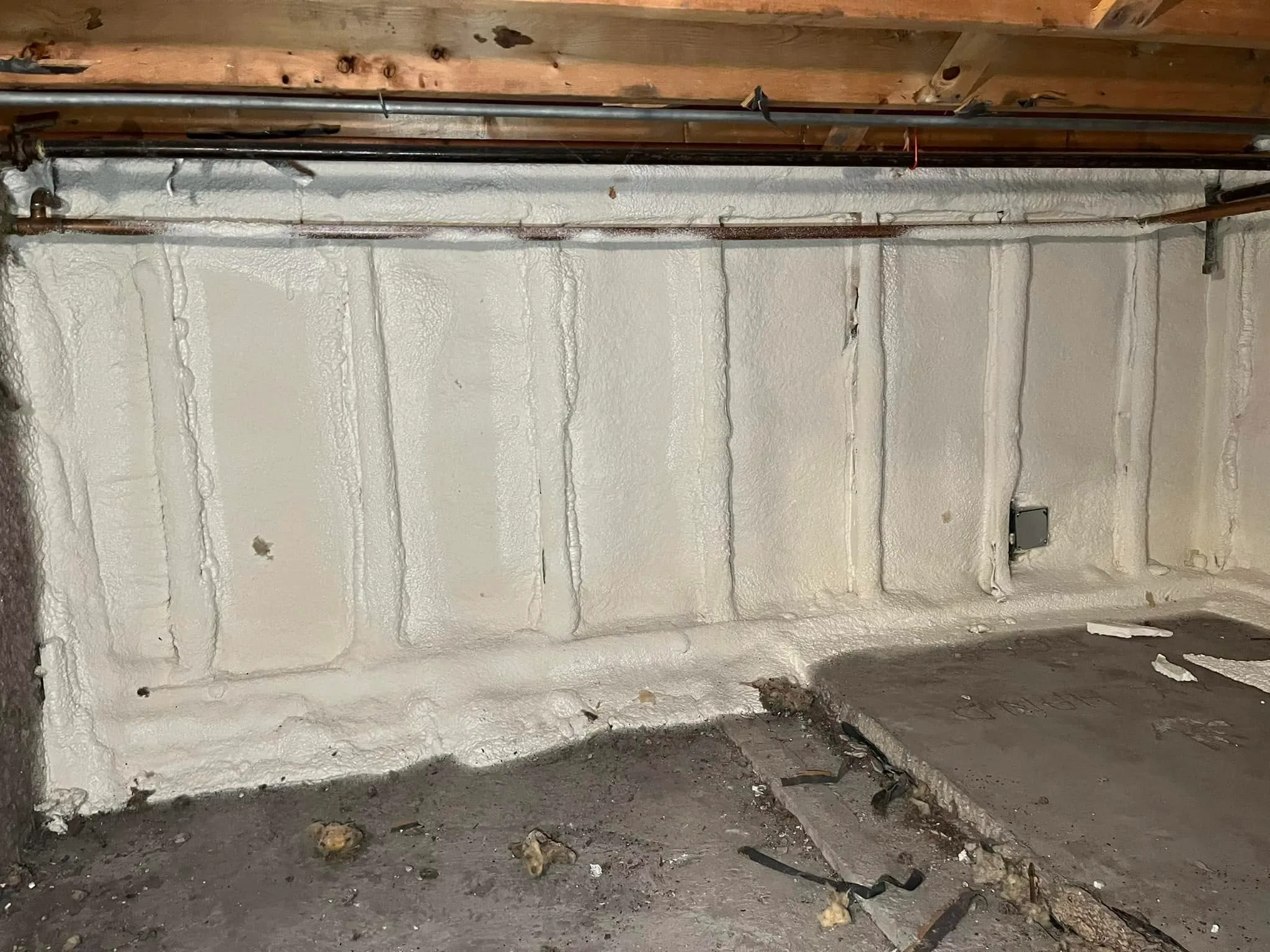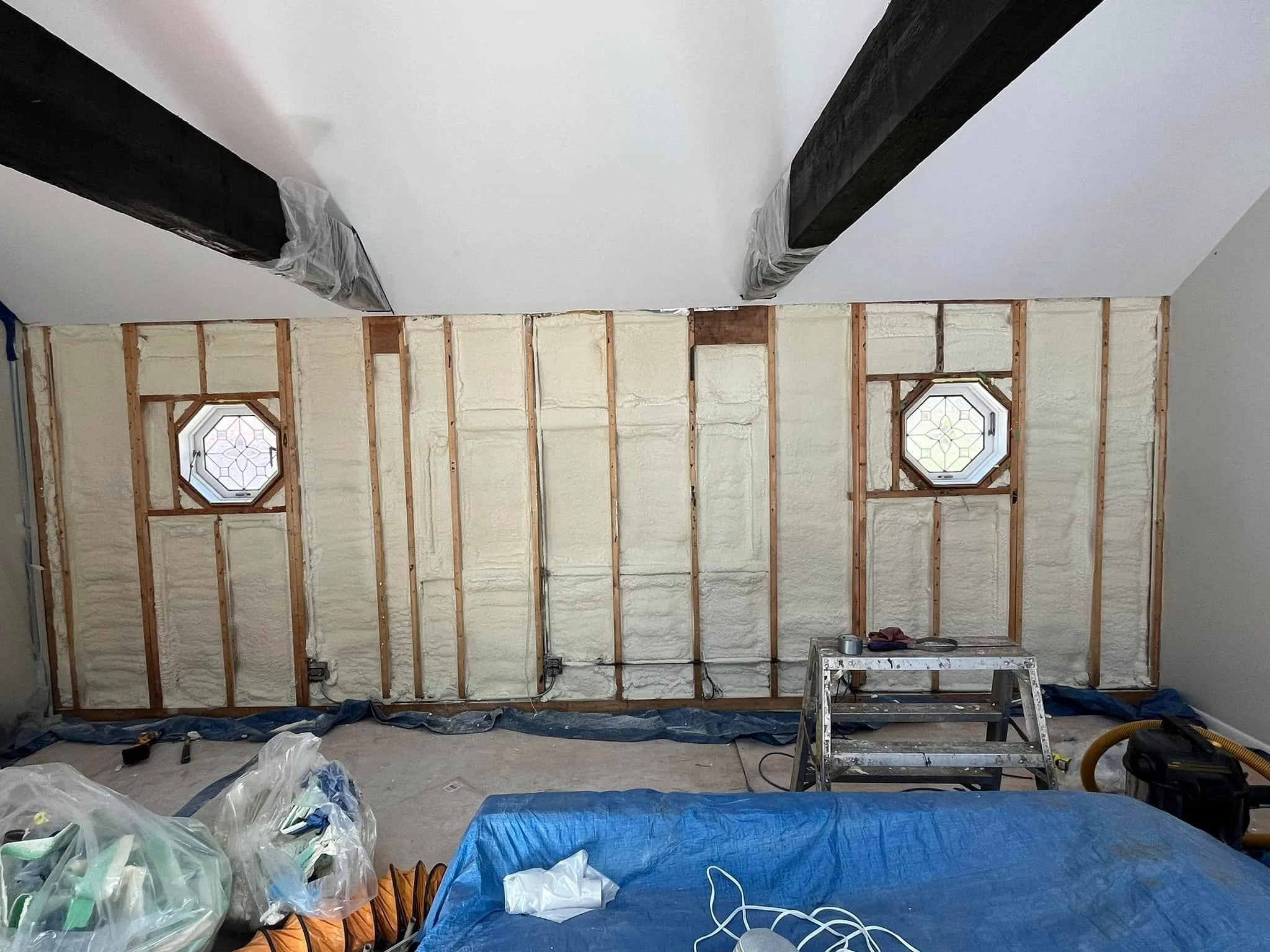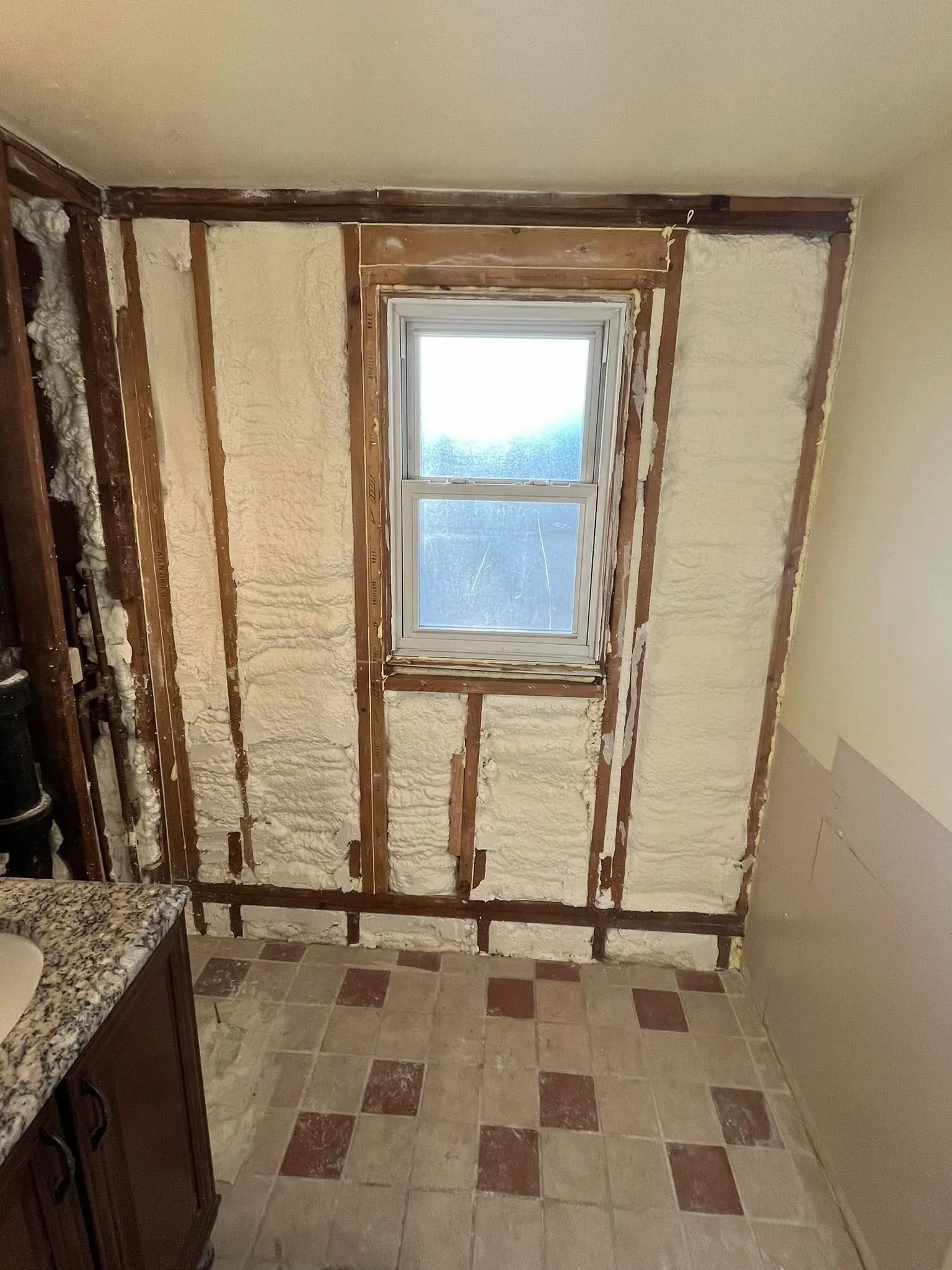
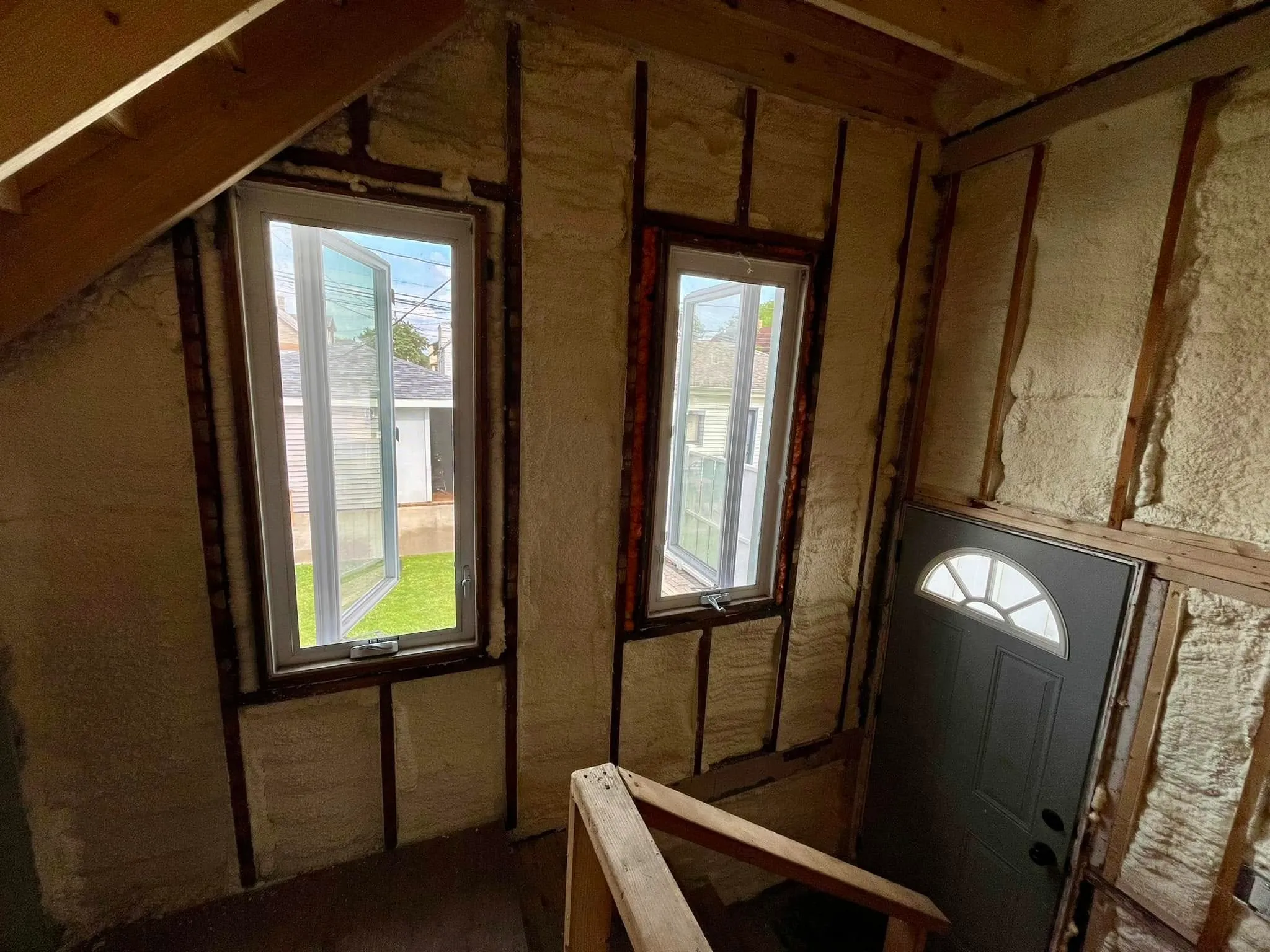
Chicago homeowners should consider spray foam insulation upgrades when their current insulation performs poorly, energy bills remain consistently high, or during major renovations. This advanced insulation method delivers superior air sealing and thermal performance compared to traditional materials, making it particularly effective for Chicago’s extreme temperature swings and older housing stock.
The decision requires evaluating your home’s current insulation condition, construction type, and long-term energy goals. South Chicago Insulation has observed that homes built before 1980 typically benefit most from spray foam retrofits, especially those with accessible attics, crawlspaces, or planned siding replacements.
Chicago’s harsh winters and humid summers create demanding conditions for home insulation systems. Traditional materials like fiberglass batts lose effectiveness when air movement occurs around them, a common problem in older Chicago,IL homes with settling foundations and wood frame movement.
Spray foam addresses these challenges through complete cavity filling and air sealing properties. The material expands to fill gaps that other insulation types cannot reach, creating a continuous thermal barrier that maintains effectiveness regardless of building movement or temperature extremes.
| Insulation Type | R-Value per Inch | Air Sealing | Moisture Control | Lifespan |
|---|---|---|---|---|
| Open Cell Spray Foam | R-3.7 | Excellent | Good | 80+ years |
| Closed Cell Spray Foam | R-6.5 | Superior | Excellent | 80+ years |
| Fiberglass Batts | R-3.2 | Poor | Poor | 15-20 years |
| Cellulose | R-3.8 | Fair | Good | 20-30 years |
Bonus Tip: Chicago homes with balloon framing (common in pre-1940 construction) experience significant air leakage through wall cavities. Spray foam application in these structures can reduce energy consumption by 30-50% according to Department of Energy studies.
The effectiveness of spray foam depends heavily on proper application thickness and foam type selection. Chicago’s climate zone 5A designation requires specific R-value targets for optimal performance.
| Application Area | Recommended R-Value | Closed Cell Thickness | Open Cell Thickness | Primary Benefits |
|---|---|---|---|---|
| Exterior Walls | R-20 to R-25 | 3-4 inches | 5-7 inches | Air sealing, thermal bridge reduction |
| Attic Floor | R-49 to R-60 | 7-9 inches | 13-16 inches | Maximum thermal protection |
| Basement Walls | R-15 to R-20 | 2-3 inches | 4-5 inches | Moisture control, thermal protection |
| Crawlspace | R-25 to R-30 | 4-5 inches | 7-8 inches | Complete encapsulation |
Professional installation ensures proper thickness application and addresses thermal bridging through structural elements. Incorrect application can lead to inadequate performance or moisture problems, particularly in Chicago’s variable humidity conditions.
Energy savings from spray foam installation typically offset higher upfront costs within 5-8 years for most Chicago homes. Utility data from ComEd shows that properly insulated homes use 25-40% less energy for heating and cooling compared to homes with standard insulation levels.
The Illinois Energy Efficiency Programs provide rebates up to $1,200 for qualifying insulation upgrades, reducing initial investment costs. Additionally, improved home comfort reduces HVAC system strain, extending equipment lifespan and reducing maintenance requirements.
Bonus Tip: Schedule spray foam installation during spring or fall months when temperatures allow for optimal curing conditions. Extreme cold can affect foam expansion and adhesion properties.
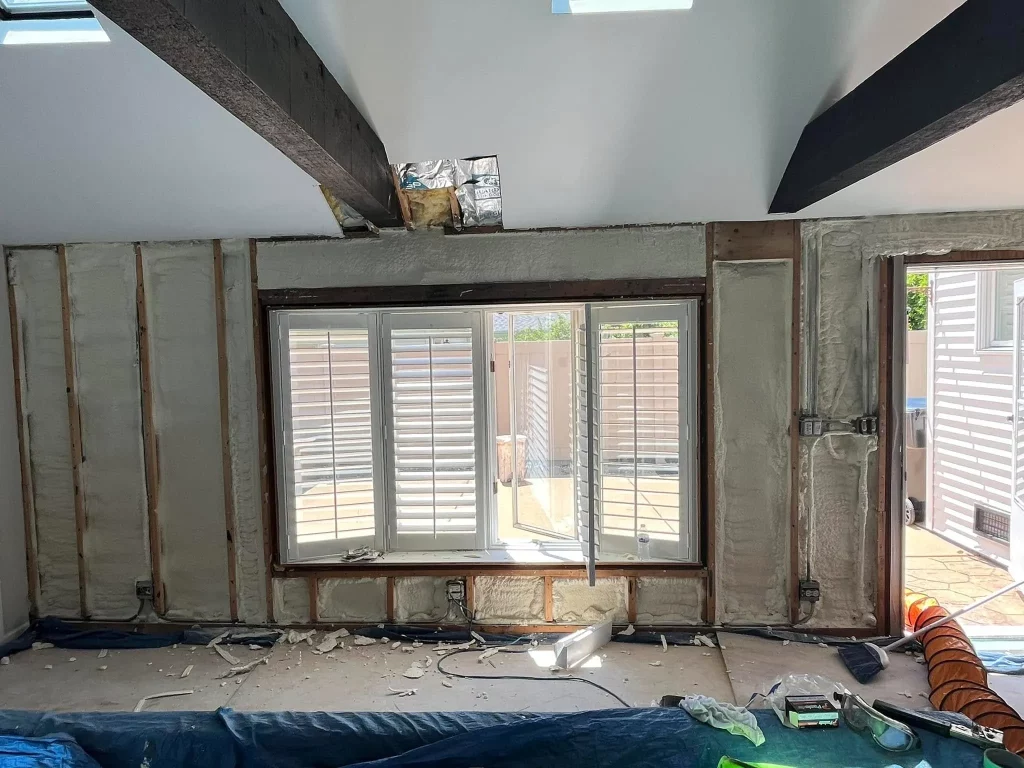
Evaluate your home’s current insulation performance through a professional energy audit. This assessment identifies specific problem areas and quantifies potential energy savings from various upgrade options. Many Chicago utility companies offer subsidized or free energy audits to qualifying customers.
Consider the scope of work required for spray foam installation. Retrofit applications may require removing existing insulation, accessing confined spaces, or temporarily relocating during installation. New construction or major renovation projects typically offer the most cost-effective opportunities for spray foam application.
Moisture management becomes critical with spray foam installation. Older Chicago homes may have existing moisture issues that require resolution before insulation upgrades. Vapor barrier considerations vary depending on foam type and application location within the building envelope.
Bonus Tip: Document your home’s energy performance before and after installation to track actual savings and identify any remaining efficiency opportunities.
South Chicago Insulation provides comprehensive insulation solutions tailored to Chicago’s unique housing stock and climate challenges:
Professional installation typically takes 1-3 days depending on project scope and home size. Most Chicago homes require minimal preparation, though furniture protection and temporary HVAC system modifications may be necessary.
Spray foam cures completely within 24-48 hours under normal conditions. During this period, adequate ventilation helps dissipate any residual odors. Most homeowners can safely occupy their homes the evening after installation completion.
Quality installations include thorough surface preparation, proper mixing ratios, and consistent thickness application. Reputable contractors provide detailed project specifications and warranty coverage for both materials and workmanship.
Spray foam insulation offers significant advantages for Chicago homes, particularly older structures with existing comfort and efficiency problems. The technology provides superior air sealing and thermal performance compared to traditional insulation methods, resulting in measurable energy savings and improved indoor comfort.
Success depends on proper assessment, appropriate foam selection, and professional installation. Consider your home’s specific conditions, renovation timeline, and long-term ownership plans when evaluating this upgrade option.
Determining the right insulation strategy requires understanding your home’s unique characteristics and performance challenges. Professional assessment identifies the most effective approaches for your specific situation and ensures optimal results from any insulation investment.
South Chicago Insulation provides expert evaluation and installation services throughout the Chicago area. Contact the team at [email protected] or call (779) 803-8025 to schedule a comprehensive home performance assessment and receive personalized recommendations for your property.
Quality spray foam installations maintain their thermal performance and air sealing properties for 80+ years when properly installed. Unlike traditional insulation that can settle, compress, or develop gaps over time, spray foam remains dimensionally stable throughout its service life.
Most spray foam installations allow homeowners to remain in their homes during the process. Installation crews typically work in sections, and proper ventilation protocols ensure safe conditions. Some sensitive individuals may prefer temporary relocation during installation and initial curing periods.
Energy-efficient improvements including spray foam insulation typically increase home value and market appeal. Buyers increasingly prioritize energy efficiency features, and documented energy savings can justify higher asking prices. Professional installation with warranty coverage adds additional value assurance.
Spray foam requires minimal maintenance once installed. Annual visual inspections can identify any potential damage from pests or mechanical systems. Unlike other insulation types, spray foam does not require periodic replacement or supplementation to maintain performance levels.
Quality installations exhibit consistent thickness, complete cavity filling, and proper adhesion to surfaces. Thermal imaging can verify continuous coverage and identify any potential weak points. Professional contractors provide detailed installation documentation and warranty coverage for both materials and workmanship quality.

